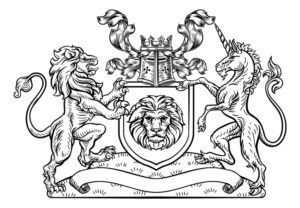Women like the color purple so much that they’re more likely to say “yes” to a man wearing purple clothes who asks them on out on a date than a man wearing clothes of any other color.
Believe it or not, the above conclusion of a survey of 2,000 people by detergent company Ariel is consistent with a wide range of other data that shows women like purple far more than men do. Men’s and women’s feelings about several colors differ, but the disparity between their feelings on purple is the largest. And, yes, that includes pink.
As a business owner or someone who wants to start a business, you should be very interested in the importance of colors. Color makes a difference. Using the right color in your sales and marketing materials, including your logo, can help you sell your products and services. The wrong color could turn off customers.
Knowing that purple appeals to women more than men can help you decide whether you should devise a purple logo. Of course, you need to know more than that. Does purple appeal more to older or younger women? What kinds of companies have had success using purple logos? Does what purple represents to people correlate with what you are selling? These questions and others will be answered in this article.
This article is the sixth in our series of articles on logo colors. The first one explained the importance of logos and whether red logos are for small existing or prospective businesses like yours. Since then, we’ve covered orange, yellow, green, and blue logos.

Mars vs. Venus
A perfect example of the maxim “men are from Mars, women are from Venus” is how men and women responded to academic researcher Joe Hallock’s survey on favorite colors.
Precisely zero men said purple was their favorite color in the survey of 10 colors’ popularity. On the other hand, purple ranked second among women in the poll behind blue with 23 percent saying purple was number 1.
Similarly, University of Maryland sociologist Philip Cohen’s poll showed that purple was far more popular among women with 27 percent selecting it as their favorite color, nearly beating out blue, while 12 percent of men chose purple. In addition, 22 percent of men and 8 percent of women in Hallock’s survey said purple was their least favorite color.
Why was there such a disparity? The surveys didn’t answer that question. But we spent some time researching why women like purple.
“Light purple or lavender is a feminine, graceful, elegant color that has long been associated with refined, wealthy women,” reports the article “Meaning of The Color Purple.” “While the color purple represents royalty, lavender represents beauty and femininity. Lavender is considered to be the “grown-up” pink.”
Most of the articles we found did not discuss why women view purple as a feminine color, but “Psychology of Color” author Eva Heller reported that surveys show purple combined with pink is associated with eroticism, femininity, and seduction.
The color of royalty
Purple’s appeal is based on more than the perception that it’s a feminine color.
“The color purple has been associated with royalty, power and wealth for centuries,” reports Live Science. “In fact, Queen Elizabeth I forbad anyone except close members of the royal family to wear it. Purple’s elite status stems from the rarity and cost of the dye originally used to produce it. Purple fabric used to be so outrageously expensive that only rulers could afford it.”
Purple was also the color of the Roman Empire’s rulers. Julius Caesar proclaimed only he could wear it and Nero executed non-royals who did, reports “All About The Color Purple.” The authority that purple conveyed was strengthened by the fact that religious leaders such as Roman Catholic bishops also often wore elaborate purple clothes. Catholic priests still do.
Given purple’s status as an elite color, it’s not surprising that purple is the color most often associated with royalty and piety, according to Heller’s book. She also wrote it’s the color most often associated with magic and mystery. Purple also represents bravery because of the Purple Heart medal for military heroes and is associated with creativity, fun, and imagination, report several experts on how to use purple in business.
“Purple is a color favored by creative types,” reports Entrepreneur magazine. “it evokes mystery, sophistication, spirituality and royalty.”

Logos in purple
Purple’s appeal to women, particularly older women according to Hallock’s survey, and its connection to elites have affected the business world — and could affect your company.
Companies that sell beauty and anti-aging products often use purple in their logos, reports “The Hidden Meanings Behind Famous Logo Colors.” If you are selling that kind of product, you should definitely consider a purple logo. “A purple logo shows that your brand is luxurious and imaginative,” the article says. “It can attract consumers who want to be seen as wealthy or wise, as well as ones who are inclined towards a feeling of magic or mystery.”
Surprisingly, few large companies have logos in purple. That’s because royalty can have a negative connotation and “communicate in an arrogant way” reports “Psychology of the Color Purple and What it Means for Your Business.” However, the lack of purple logos can represent an opportunity for you.
Companies that use purple logos include:
- Cadbury
- FedEx
- Avid
- Hallmark Cards
- Lady Speed Stick
- Monster.com
- SyFy
- The Willy Wonka Candy Company
- Yahoo
“There’s no need to shy away from purple and limit it to represent feminism, luxury and beauty only,” recommends the article “Meaning and Uses of Colors in Logo Design.”
Will you try a purple logo for your business?
For more ideas, browse the hundreds of logo designs in our logo maker software.







